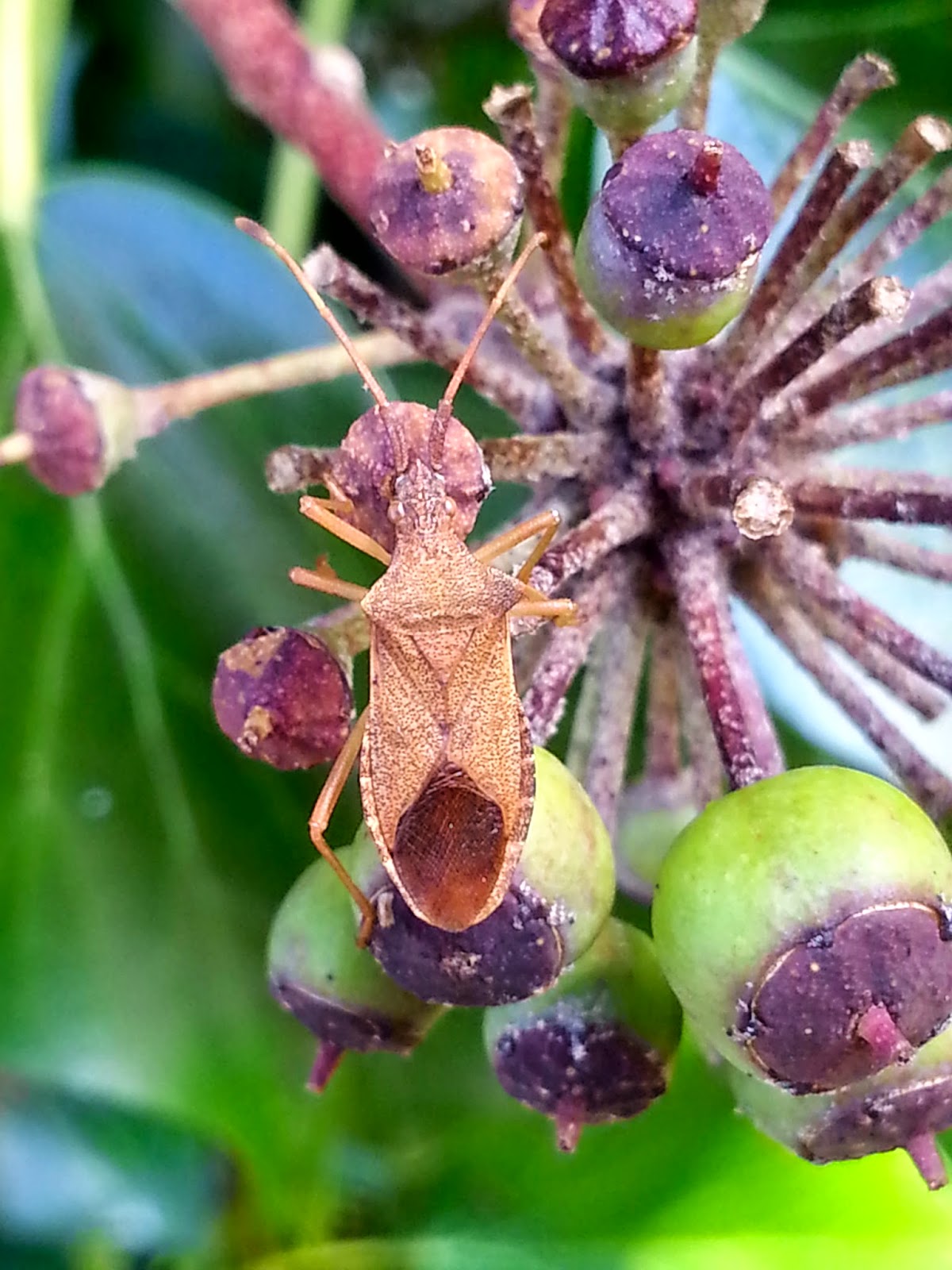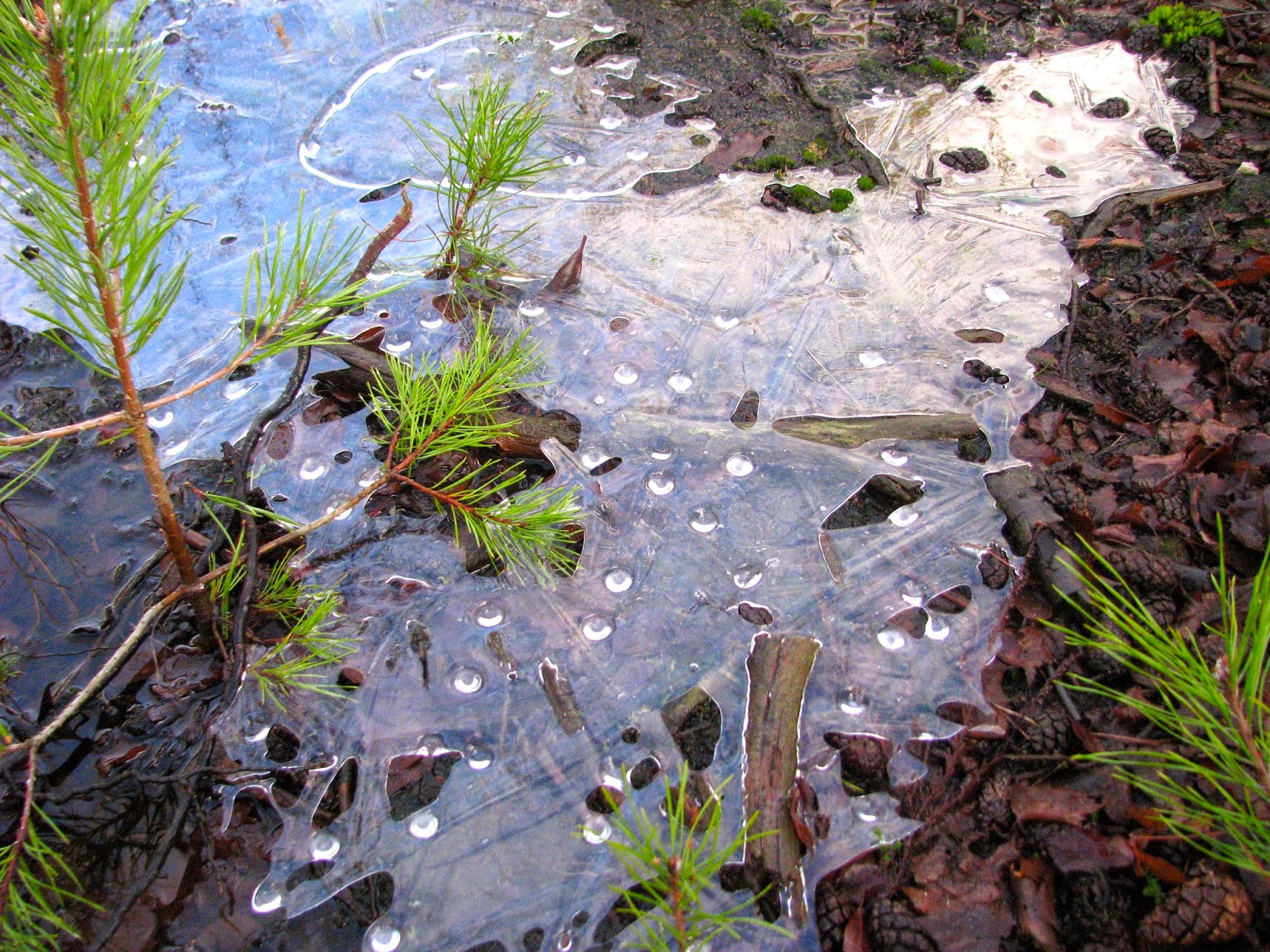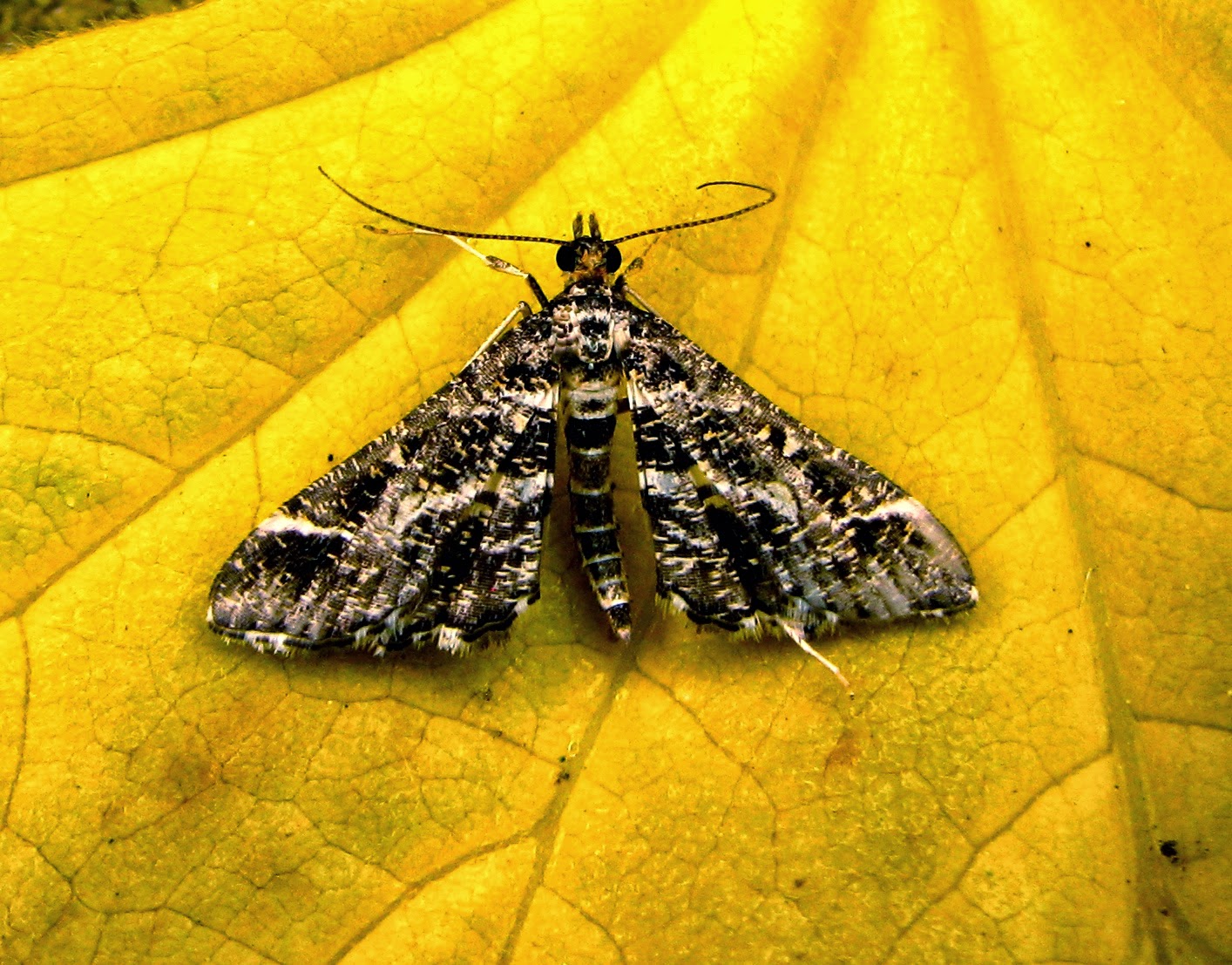I was so busy looking for tiny things on the net, I overlooked the bug for a while!
After leaving the recent Weevil Workshop at Dinton Pastures CP, I stopped off at Wellingtonia Avenue on the way home. Tapping some of the lower branches of the species from which the road gets its name, a Heather Ladybird appeared along with a couple of picture-winged flies, which key out to be Tephritis conura.
Targetted searches save time and the Eleagnus in my mother's garden had the expected psyllid Cacopsylla fulguralis.

















































